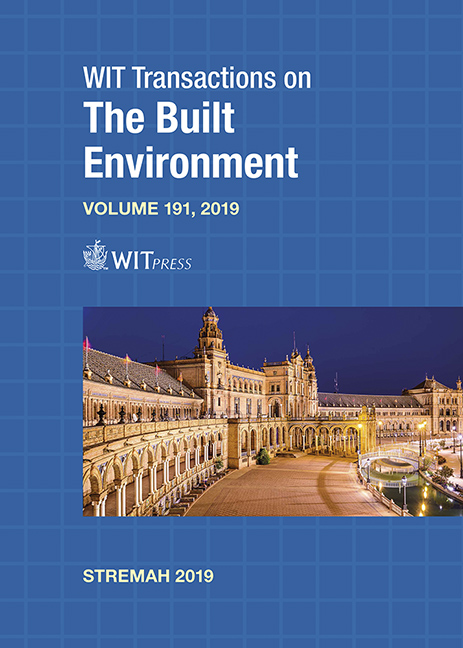EVALUATING THE PERFORMANCE OF A DAYLIGHTING TRADITIONAL DEVICE, THE MASHRABIYA, IN CLEAR SKY CONDITIONS: CASE STUDY OF A TRADITIONAL BAHRAINI HOUSE
Price
Free (open access)
Transaction
Volume
191
Pages
15
Page Range
395 - 409
Published
2019
Paper DOI
10.2495/STR190341
Copyright
WIT Press
Author(s)
HANA M. ALJAWDER, HALA A. EL-WAKEEL
Abstract
The mashrabiya is used in traditional Islamic architecture to provide visual privacy, reduce the glare from direct sunlight, and allow natural ventilation. Traditional Bahraini houses were designed with specific features and characteristics to cater to the cultural and religious needs of the occupants and the bio-climatic conditions. This study has investigated the impact of the mashrabiya on daylight performance within a space and examined how it affects the quantity and quality of the daylight that is admitted into the space. A field study was conducted in one of the traditional houses in Bahrain for evaluating the performance of the mashrabiya in providing daylight in the space. The studied room was located on the upper floor and had an L shape layout (27.75 m2). The main wall of this room faced the north with openings covered with mashrabiya, while the inner part of the room (the south wall) overlooked an atrium with a skylight. The south wall had two small openings that increased the illumination level in a small part of the room. The results showed that the performance of daylight throughout the mashrabiya was better, to some extent, than without any screen. The mashrabiya in this case can provide the level of illuminance recommended for residential activities and can provide better uniformity as compared to the space without a mashrabiya. The mashrabiya device is capable of reducing the impact of glare in the whole space. It is preferable to improve the design of the mashrabiya to enhance the uniformity of daylight in the space. The chromaticity of light in the space, as the CCT calculation for all the measured points below the accepted level, was another challenge with regards to the performance of the mashrabiya device. A mashrabiya is likely to demonstrate a more successful performance and better daylighting if it is designed and modified to consider uniformity and the chromaticity of light in the space.
Keywords
Bahrain, day lighting, illuminance, mashrabiya, traditional device




